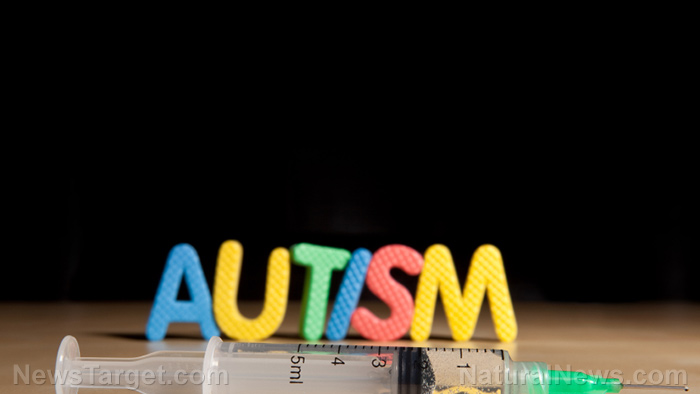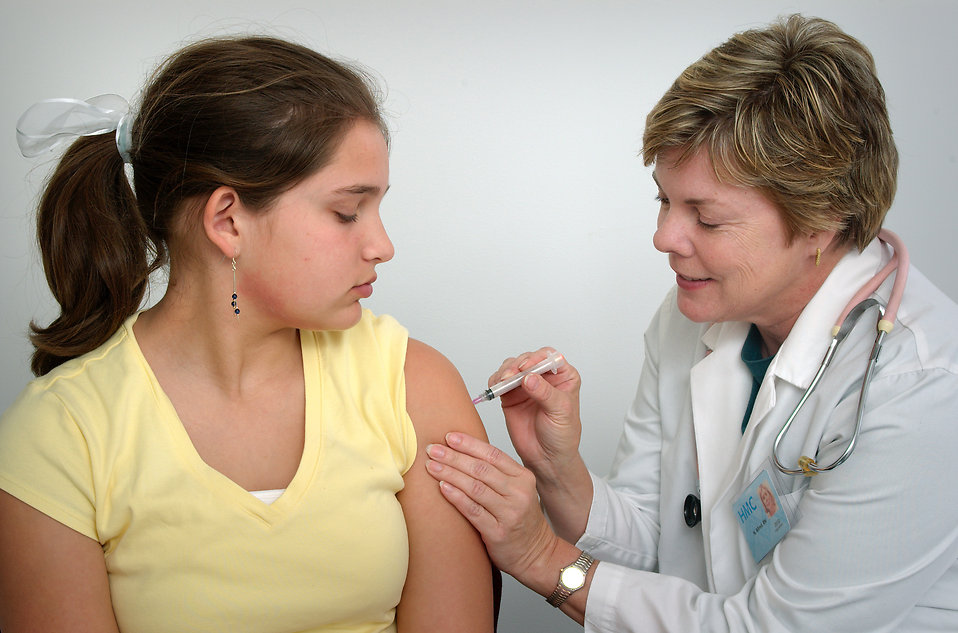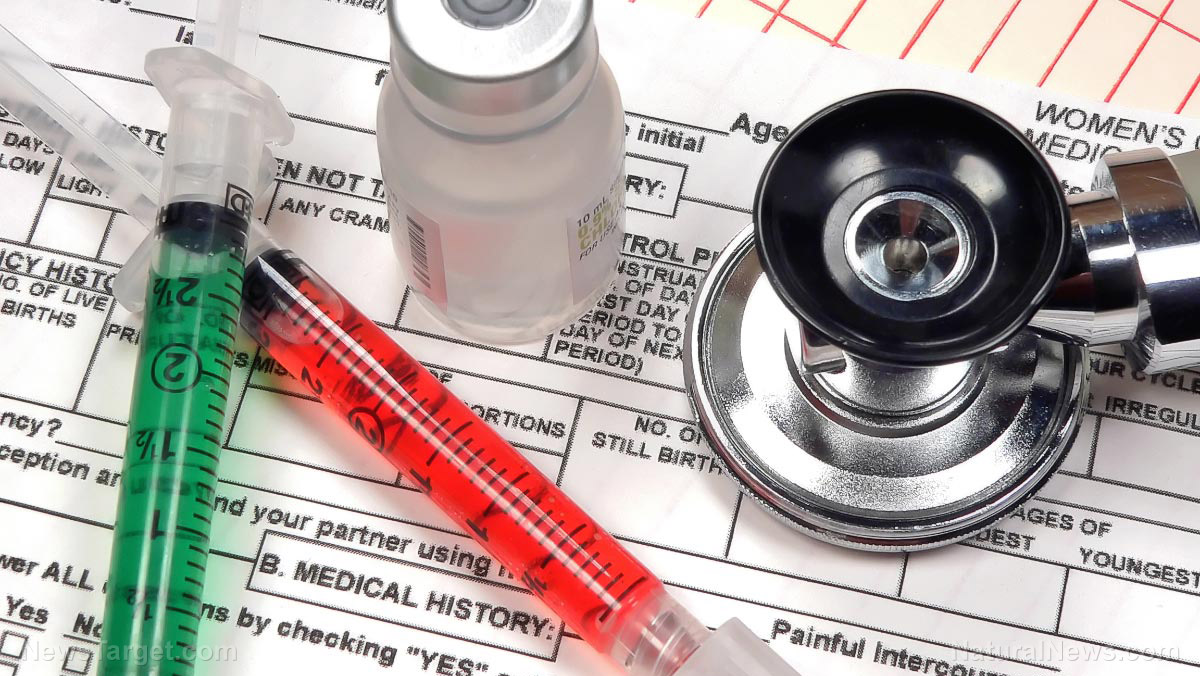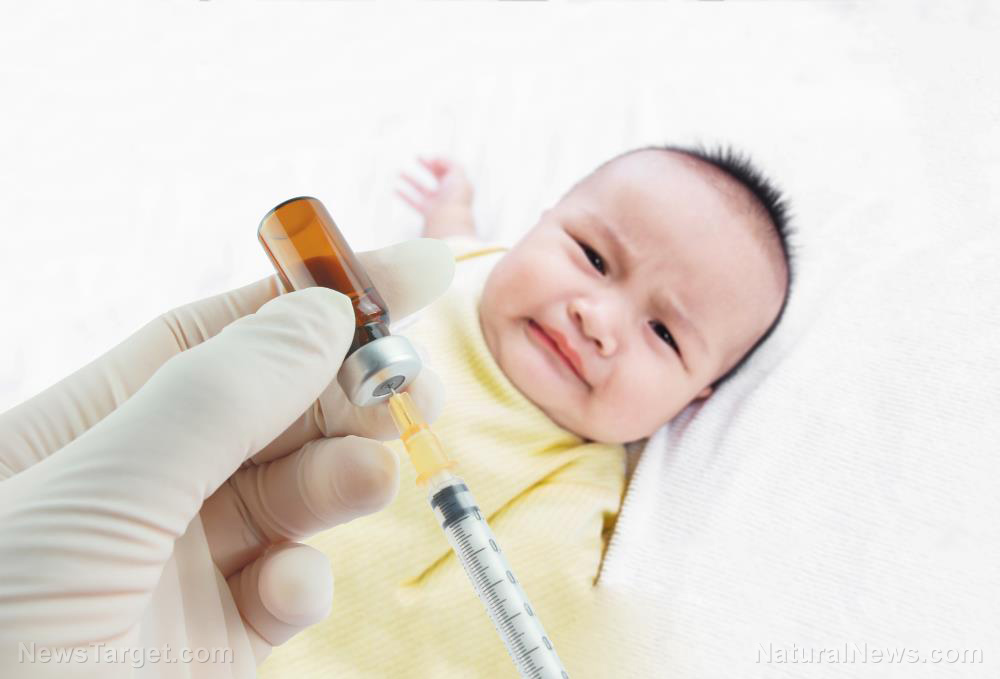America’s dark vaccine history – A look at the pertussis vaccine
01/31/2019 / By Lance D Johnson

Vaccination is often heralded as the greatest scientific achievement in modern medical history, but science and case history shows that vaccination is not synonymous with immunization. Vaccination often fails to prevent targeted diseases and can actually spread disease (shedding). Vaccination also perpetuates viral and bacterial mutations and causes complications, including lifelong autoimmune issues or brain damage. The sordid history of the pertussis vaccine tells a compelling story of decades-long vaccine failure, vaccine damage to children, and the rise of resistant whooping cough strains.
Whooping cough explained
B. pertussis disease can be identified as far back as the 16th century. Known as the “100 day cough,” B. pertussis can be deadly for infected infants who have underdeveloped or ineffective airways. This is because the gram negative bacterium reproduces in the respiratory tract, producing a thick, sticky mucous that can block a child’s airways. Infants are increasingly vulnerable to infection if they are not receiving antibodies via their mother’s breast milk. Colloidal silver, capable of breaking up and breaking down various bacteria strains, is a palatable intervention that can be administered via pipette to infants and children. The persistent cough is the body’s natural reaction to clear the airways of this infectious bacterium and the mucous produced.
A vaccine to eradicate B. pertussis was licensed in the U.S. in 1914, and was later licensed in 1949 as part of the combination vaccine for diphtheria and tetanus toxoids (DTP). The vaccine contained whole cell pertussis bacteria, which is heated and washed in carcinogenic formaldehyde. The vaccine also includes shock-inducing endotoxin, brain-damaging bioactive pertussis toxin, mercury, and aluminum. The pertussis toxin is very lethal and has been used by researchers to induce acute experimental autoimmune encephalomyelitis in lab animals.
B. pertussis vaccines caused mutations that now commonly infect the vaccinated
In theory, vaccine makers believed that, by exposing infants to a series of pertussis bacterial injections, their immune systems would be better equipped to prevent more horrifying respiratory infections. However, after widespread administration of B. pertussis bacterium in the 1950s, scientists began to identity mutations and vaccine-resistant strains of the bacteria. Today, mutated, vaccine resistant pertussis strains are being identified more often in vaccinated persons than in un-vaccinated persons.
The whole cell pertussis toxoid has not been given to babies in America for 20 years because of the complications it caused. Because of its highly reactive nature, the whole cell pertussis vaccine reportedly killed infants without warning in 1933. In the 1960s, the medical community came clean that the vaccine was causing convulsion and brain damage in children. Medical authorities have reported hypotonic and hyporesponsive episodes in children following vaccination, febrile convulsions, seizures, and serious brain inflammation called encephalitis. Lasting consequences include seizure disorders, low IQ, and speech and motor disorders.
In 1996, the whole cell pertussis vaccine was replaced by the acellular pertussis toxoid in the DTaP vaccine, which reportedly causes similar adverse events, but at lesser frequency. Many eyes were opened in 1982, when an award winning documentary, DPT: Vaccine Roulette, aired. The book, DPT: A Shot in the Dark, became popular in 1985.
DTP failures spurred the creation of vaccine injury payout system
By the 1980s there were so many vaccine injury lawsuits caused by DPT vaccines that Congress had to act. Instead of holding pharmaceutical companies accountable, Congress gave vaccine makers legal immunity. The National Childhood Vaccine Injury Act required an excise tax to be collected per vaccine in order to pay families who had been damaged by vaccines. Vaccine injuries had to meet stringent criteria to be considered viable. Because of this, vaccine makers had no incentive to improve the safety of vaccines; they were only given incentive to generate sales of new vaccines. The DTP vaccine and the DTaP vaccine are two of the biggest culprits of vaccine injury, along with the influenza vaccines, as documented in the Vaccine Adverse Events Reporting System (VAERS).
Whooping cough persists, despite a century of vaccine promises
The science used to license vaccines as effective is based on reactivity. If the vaccine toxoids and adjuvant can illicit an immune response in serum, total immunity is assumed for the population. These assumptions permit ineffective and dangerous vaccines to be inflicted on the population for experimentation purposes. Many cases of whooping cough are not reported to the government, and many cases are unknown because of semblance to other respiratory infections. Out of the 15,808 whooping cough cases that were reported in the U.S. in 2017, there were 13 fatalities.
After a child naturally recovers from pertussis infection, their body achieves immunization that lasts between seven and twenty years. Vaccination with acellular pertussis or whole cell pertussis confers artificial immunity for approximately two years. The TDaP booster shot, approved for teenagers in 2010, was found to be only 66 percent effective.
The precise immune response differs from one individual to the next due to variations in microbiome, nutrient deficiencies, and conferred immunity from parents. Because wide scale vaccination has caused mutations in the pertussis bacteria, most infections today do not target the same bacteria that the human population tried to build immunity to decades ago. The complications that come from these mutated pertussis bacteria are often diagnosed as pneumonia, bronchitis, and other respiratory diseases; therefore, vaccination has perpetuated disease and death.
The end game is vaccine compliance, not improving public health
Even though 85 percent of children receive three pertussis shots for prevention of respiratory infection, every year there are still 160,000 children under the age of five who die from pertussis complications such as pneumonia. Many of the children who do not survive respiratory disease lack access to clean water, nutrition, botanical anti-microbials, and medical facilities, and they often live in impoverished, crowded conditions that lack proper sewage and sanitation. There are more prudent ways to prevent and treat respiratory infection to save children’s lives than subject them to highly reactive, brain-damaging pertussis toxoids that cause toxic burden, short-lived immunity, bacterial mutations, and sometimes death.
In 2015, the U.S. and British governments, the Bill and Melinda Gates Foundation, and GAVI, the Vaccine Alliance funded a paper that was embraced by the World Health Organization. The paper instructs global public health officials to reject a century of evidence documenting the toxicity, contraindications, and risks of the whole cell pertussis vaccine. Health officials are instead urged to recommend this ineffective and dangerous vaccine for infants, children, and adults until compliance is reached worldwide.
Sources include:
Tagged Under: acellular pertussis, adverse events, brain damage, child health, Colloidal Silver, Convulsions, dtap, DTP, formaldahyde, human breast milk, immunization, mutations, pertussis, Pneumonia, respiratory infection, toxic ingredients, vaccine injury, VAERS, whole cell pertussis, Whooping cough


















